|
Winmate G-WIN S65
Winmate's slim 3rd generation of G-WIN rugged Panel PCs
(by Conrad H. Blickenstorfer)
Share on:




In this article we'll take a look at Winmate's as of January 2017 new G-WIN "Slim" IP65 series of Panel PCs and displays, starting with a general intro to rugged panel computers.
Mobile computers come in a variety of shapes, sizes and purposes. Individuals, both consumers and professionals, use smartphones, tablets and laptops to fill their mobile computing and communications needs. But those generally small and lightweight devices won't do in many other applications where computers are needed away from desks. Like trucks, cranes, forklifts, military vehicles, factory assembly lines, and numerous other industrial and vehicular applications.
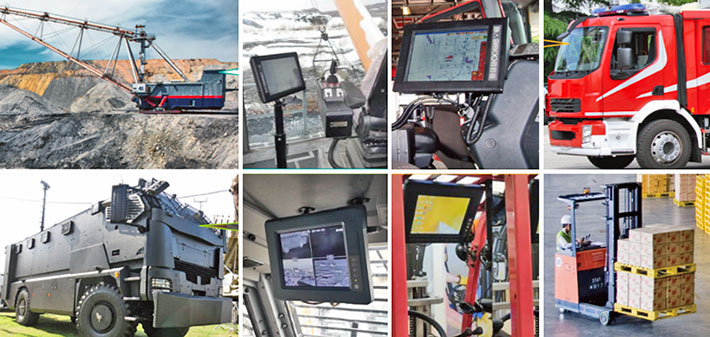
Computers that can handle those jobs are very different from those that people carry around. They are mounted wherever they are needed and so that they are easily accessible while working. They must be tough and durable and vulnerable because they are tools for the job. They must be easy to use, their displays must be large enough and bright enough to see. Their user interface must be simple and reliable. They must not break down and they must not require much maintenance, if any.
They are industrial panel computers and they are the original all-in-ones. They look like just monitors, but they have a computer built in. Most use touch because, without a mouse and keyboard, that is the easiest way to interact with a screen.
Winmate's G-WIN rugged panels: concept and testing
Winmate has been making such panel computers for many years. Their G-WIN line is now in its third generation. What's the thought process behind creating such panels?
Well, Winmate came up with a whole list of things.
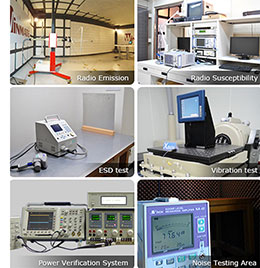 - Since panels are often used in vehicles, they had to accommodate a wide range of possible power supplies.
- Since they operate in hard conditions, they must be well sealed and made of materials that don't easily corrode.
- Since it may get very hot or very cold on the job, they must be able to handle a wide operating temperature range.
- Since they might be subjected to significant shock and vibration, they must be able to handle that, too.
Whenever something is designed to handle certain conditions and impacts, it's good to use tests to see if the product can indeed handle such conditions and impacts without failing. Lacking general testing suites specifically developed for rugged computing gear, the rugged mobile computing industry generally relies on testing procedures in the MIL-STD-810G standard. That standard, however, is primarily geared towards keeping goods from getting damaged in transport rather than actual use in field conditions.
There is, however, also EN50155, an international standard that covers electronic equipment used on rolling stock for railway applications. And since many panels are used in heavy industrial vehicles, using the EN50155 makes sense. So Winmate decided to perform cooling, dry heat operation, damp heat, salt mist, vibration, shock, low temperature storage and watertightness testing according to EN50155 standards.
The new "slim" Winmate S65 panels
While physical aspects such as toughness and resistance don't change much over the years, technology does. Technology advances in such areas as larger and better displays, in new and improved interface methods, and in more powerful yet much more compact electronics. This affects packaging and allows new and improved form factors. And it made Winmate's new G-WIN S65 "Slim" Series possible.
So what's this new "Slim" series of tough Winmate panel computers all about? For one thing, it introduces projected capacitive multi-touch to Winmate's panel offerings. It brings an elegant new look with flat edge-to-edge design, just like consumer tablets have. Packaging is thinner and lighter, but without giving up ruggedness and protection.
Winmate also decided to make these new panels available in different versions. And for once that doesn't simply mean there's a selection of various different processors. Instead, with one exception, Winmate offers each of the four available "slim" series models (7, 10.1, 12.1 and 15 inch displays) either in a Windows configuration, an alternate-OS configuration, or in a display-only configuration.
The Windows configurations use pretty much any embedded version of Windows going back to Windows 7. That includes Windows Embedded Standard 7, Windows 7 Pro for embedded systems, Windows Embedded 8 Standard, Windows Embedded 8.1 Industry Pro, and Windows 10 IoT Enterprise.
The alternate OS version uses Android 4.4 as the default, but either the Linux Kernel or popular distributions such as Ubuntu are also supported. The Qt cross-platform application framework browser is supported as well.
Below you can see the four different size versions, front and back"
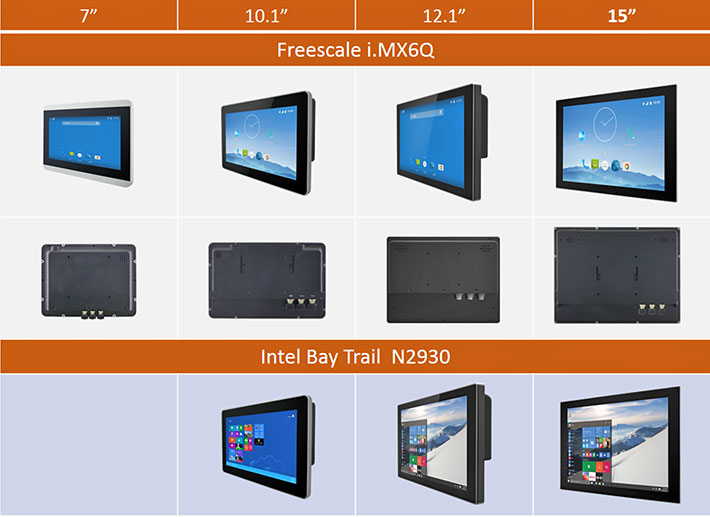
Finally, the panels can also be ordered as just displays. Display-only panels look the exact same, but they don't have the computer inside. Instead, they replace the other versions' serial port with a VGA port for connection to an external PC.
Intel Bay Trail N2930 vs. Freescale i.MX6
All Windows-based versions of the new Winmate "slim" panels use an Intel processor, whereas the non-Windows versions run on an ARM-based chip, the Freescale i.MX6.
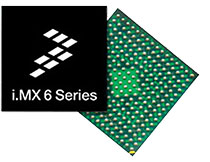 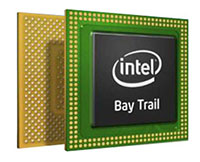 Freescale's i.MX chips, implemented as System-on-Chips, focus on multimedia applications where very low power consumption matters. They are ARM-based, generally used in industrial and automotive applications, and have a long lifecycle. Freescale's i.MX chips, implemented as System-on-Chips, focus on multimedia applications where very low power consumption matters. They are ARM-based, generally used in industrial and automotive applications, and have a long lifecycle.
The i.MX6 is available in single, dual, and quad core configurations. Winmate uses a dual-core version, but also offers a quad-core chip.
Intel's quad-core N2930 is part Intel's "Bay Trail" lineup. It is also a System-on-Chip solution that runs at 1.83GHz, has a burst frequency of 2.16GHz, supports fast but efficient DDR3L RAM, and yet still has a Thermal Design Power of just 7.5 watts.
This means enough computing and graphics power for numerous target applications, full compatibility with the Windows eco-system, and it comes in a small-enough thermal envelope to facilitate fanless, sealed operation. The N2930 is used in a large variety of industrial, embedded and ruggedized mobile systems.
This processor and operating system dichotomy is quite common in rugged handheld and tablet computers that often come in both Windows and Android versions. There are usually small hardware differences due to OS capabilities and resource requirements. Android and Linux generally have lower resource requirements than Windows, and this is also evident in the RAM and mass storage specs of these new "slim" panels.
The table below shows the major specs of the four different size versions of the slim S65 panels. as well as the differences in the Windows, non-Windows and display-only versions:
|
Winmate G-WIN S65 "Slim" Series models
|
|
Company
|
Winmate
|
Winmate
|
Winmate
|
Winmate
|
|
Model
|
7-inch G-WIN S65
|
10.1-inch G-WIN S65
|
12.1-inch G-WIN S65
|
15-inch G-WIN S65
|
|
Screen size
|
7.0 inches diagonal
|
10.1 inches diagonal
|
12.1 inches diagonal
|
15.0 inches diagonal
|
|
Screen resolution
|
1024 x 600 pixel
|
1280 x 800 pixel
|
1024 x 768 pixel
|
1024 x 768 pixel
|
|
Screen pixel per inch
|
170 ppi
|
149 ppi
|
106 ppi
|
85 ppi
|
|
Screen aspect ratio
|
17 : 10
|
16 : 10
|
4 : 3
|
4 : 3
|
|
Screen brightness
|
500 nits
|
300 nits
|
500 nits
|
250 nits
|
|
Touch
|
PCAP multi-touch
|
PCAP multi-touch
|
PCAP multi-touch
|
PCAP multi-touch
|
|
CPU
|
A) NA
B) 1GHz Freescale i.MX6
C) None (display only)
|
A) 1.83GHz Intel N2930
B) 1GHz Freescale i.MX6
C) None (display only)
|
A) 1.83GHz Intel N2930
B) 1GHz Freescale i.MX6
C) None (display only)
|
A) 1.83GHz Intel N2930
B) 1GHz Freescale i.MX6
C) None (display only)
|
|
RAM
|
A) NA
B) 1/3GB LPDDR3
C) None (display only)
|
A) 2/8GB DDR3L
B) 1/3GB LPDDR3
C) None (display only)
|
A) 2/8GB DDR3L
B) 1/3GB LPDDR3
C) None (display only)
|
A) 2/8GB DDR3L
B) 1/3GB LPDDR3
C) None (display only)
|
|
Storage
|
A) NA
B) 8/16GB eMMC
C) None (display only)
|
A) 32/128GB mSATA SSD
B) 8/16GB eMMC
C) None (display only)
|
A) 32/128GB mSATA SSD
B) 8/16GB eMMC
C) None (display only)
|
A) 32/128GB mSATA SSD
B) 8/16GB eMMC
C) None (display only)
|
|
OS
|
A) NA
B) Android/Linux
C) None (display only)
|
A) Windows Embedded/IoT
B) Android/Linux
C) None (display only)
|
A) Windows Embedded/IoT
B) Android/Linux
C) None (display only)
|
A) Windows Embedded/IoT
B) Android/Linux
C) None (display only)
|
|
Size
|
190 x 145 x 40 mm
|
263 x 172 x 40 mm
|
296 x 227 x 46 mm
|
363 x 278 x 45 mm
|
|
Power
|
A) NA
B) 9~24V DC (M12)
C) 9~36V DC (M12)
|
A) 9~36V DC (M12)
B) 9~24V DC (M12)
C) 9~36V DC (M12)
|
A) 9~36V DC (M12)
B) 9~24V DC (M12)
C) 9~36V DC (M12)
|
A) 9~36V DC (M12)
B) 9~24V DC (M12)
C) 9~36V DC (M12)
|
|
Sealing (front/full)
|
IP65/IP65
|
IP65/IP65
|
IP65/IP65
|
IP65/IP65
|
|
Product pages/specsheets
|
A) NA
B) 7-inch Freescale
C) 7-inch display
|
A) 10.1-inch Bay Trail
B) 10.1-inch Freescale
C) 10.1-inch display
|
A) 12.1-inch Bay Trail
B) 12.1-inch Freescale
C) 12.1-inch display
|
A) 15-inch Bay Trail
B) 15-inch Freescale
C) 15-inch display)
|
In an effort to cover all possible customer requirements, Winmate offers the new G-WIN S65 series in an almost dizzying variety of types, configurations and options. This would appear to be a complex way of doing business, but not if you employ a modular mix-and-match approach. The way Windmate does it allows building almost any conceivable panel computer around inhouse embedded systems components and technologies (see Winmate's Industrial Panel PC landing page).
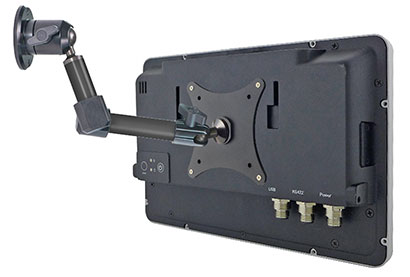 An example of this modular approach is the standardized I/O area on every S65 "slim" series panel. All I/O ports use M12 style connectors. An example of this modular approach is the standardized I/O area on every S65 "slim" series panel. All I/O ports use M12 style connectors.
M12 connectors use a standardized, waterproof screw-on (or bayonet) design that is rugged, eliminates unintended disconnection, and can be used for various types of connectivity via a variety of standardized pin arrangements and coding.
In S65 panels that include the computer, the standard three M12 connectors provide power, RS232 serial, and LAN/USB combined. In display-only versions one of the M12 connectors provides VGA video instead of serial.
The image to the right also shows one of the numerous mounting methods for S65 "slim" series panels. Depending on their size they come with either 75x75mm or 100x100mm standard VESA whole patterns that provide access to the nearly endless variety of adjustable arm and clamp drill or no-drill mounting hardware. Alternately, of course, S65 panel computers and panel displays can mounted directly into, well, panels.

|





